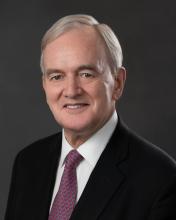You are here
The case against Fed gradualism
Feb 23,2022 - Last updated at Feb 23,2022
NEW YORK — So far this century, the US Federal Reserve has been relentlessly gradualist about increasing the federal funds rate. Since its last 50-basis-point rate hike in May 2000, the Fed has increased its policy target (now its target range) by only 25 bps at a time. It was not always like this. After moving to rate targeting in late 1982, the Fed hiked the federal funds rate by over 1 per cent on one occasion, by 75 bps on three other occasions, and by 50 bps on nine other occasions.
By contrast, in the run-up to the 2007-09 financial crisis, from June 2003 to June 2006, the Fed raised its policy rate from 1 per cent to 5.25 per cent through17 scheduled hikes of 25 bps each. And in the latest hiking cycle, which started in December 2015, the upper limit of the Fed’s target range rose nine times by 25 bps each, taking it from 0.25 per cent to a peak of 2.5 per cent in December 2018.
But the Fed was not so gradualist on the way down. Starting in August 2019, the Fed headed back toward an effective lower bound of 0.25 per cent with three 25-bps rate cuts, followed by a 50-bps rate cut at an unscheduled meeting on March 3, 2020, and by a further 100-bps cut at a second unscheduled meeting on March 15, 2020.
Now that the Fed is once again weighing a tighter monetary policy, should it adopt the same gradualism as it did over the past two decades?
The latest inflation figures suggest that it should not. As of January 2022, the consumer price index was up 7.5 per cent year on year, with core inflation, excluding food and energy, reaching 6 per cent. Personal consumption expenditures in December 2021 were 5.8 per cent higher than in December 2020, with core inflation coming in at 4.9 per cent. Across the nine measures of underlying inflation tracked by the Federal Reserve Bank of Atlanta, annual increases as of January 2022 ranged from 3.1 per cent to 6 per cent. Average hourly earnings had increased by 5.7 per cent.
So, where should the policy rate be, and how fast should the Fed move to get there? A good starting point is the neutral policy rate, where the federal funds rate would be with inflation at its target level and full employment. A reasonable estimate of the neutral rate is 2.5 per cent, which also happens to be the Fed’s estimate of the longer-run federal funds rate. The policy rate should be higher (or lower) than the neutral rate if inflation is above (or below) target and if the unemployment rate is below (or above) the “natural” or equilibrium unemployment rate.
Taking even the most conservative estimate, inflation currently is 1.1 per cent above target, and it is no longer tenable to argue that it is “transitory”, the result of base effects, temporary adverse supply shocks (including supply-chain disruptions), and short-term spikes in energy and other commodity prices. The January 2022 unemployment rate (4 per cent) is slightly above its pre-COVID low (3.5 per cent), and nonfarm employment is 1.9 per cent below its pre-pandemic level in February 2020.
However, the empirical evidence on unemployment, high job vacancies and high quit rates, supports the view that structural mismatch and frictional unemployment have increased, and that the economy now is at or slightly above full employment. After all, real (inflation-adjusted) GDP has returned to its pre-COVID trend. That is consistent with the economy operating at or above full capacity, because one must account for the likely permanent negative effects of COVID-19, cyber criminality, climate change, demographics, and deglobalisation on potential output. The pursuit of the Fed’s dual mandate, stable prices and maximum employment, thus calls for a federal funds target rate well above 2.5 per cent.
Let’s assume, conservatively, that the lower bound of the target range should not be less than 3.5 per cent. A 3.5 per cent federal funds rate is no threat to financial stability if there is adequate funding liquidity for systemically important financial institutions and adequate market liquidity for systemically important financial instruments. The United States and the global economy have lived comfortably with a significantly higher federal funds rate for many years.
Some commentators will warn that an unexpectedly fast increase in the policy rate could threaten financial stability in the US and abroad, especially in emerging markets, where both public and private agents have taken on significant, and often short-duration, dollar-denominated debt. But financial crises are not caused by high interest rates or by rapidly rising interest rates. They are caused by a lack of funding liquidity and market liquidity.
I therefore have only limited concerns about the domestic impact of a fast sequence of rate hikes, say, a 150-bps increase in March followed by two consecutive 100-bps hikes at the Federal Open Market Committee’s next regularly scheduled meetings. Should the need arise, the Fed knows by now how to provide funding liquidity as lender of last resort and market liquidity as market maker of last resort.
The adverse international repercussions of rapid rate hikes are more worrisome. The Fed’s bilateral currency swaps do not cover many financially vulnerable emerging markets and developing countries, and the International Monetary Fund has limited resources to function as a global lender of last resort. Owing to these constraints, it would make sense to pursue a slightly slower tightening cycle of, say, one 100-bps hike followed by five successive 50-bps hikes.
Either way, when it comes to the US economy, neither caution, prudence, nor the precautionary principle call for gradualism. The credibility of the Fed’s commitment to price stability is at stake. Unless the Fed raises interest rates rapidly to restrain aggregate demand, inflation will continue to overshoot its target. Long-term inflation expectations may not yet have become unanchored, but that is a real and growing risk.
Although the market-based five-year, five-year-forward expected inflation rate was 2.07 per cent on February 15, 2022, short- and medium-term inflation expectations are already well above the Fed’s target. The Federal Reserve Bank of New York’s January 2022 survey of consumer expectations puts median one- and three-year-ahead inflation expectations at 5.8 per cent and 3.5 per cent, respectively. Similarly, the University of Michigan’s consumer survey in January 2022 put one-year inflation expectations at 4.9 per cent and five-year expectations at 3.1 per cent.
To safeguard its credibility, the Fed must take decisive action. Another drawn-out sequence of 25-bps hikes will not do the job.
Willem H. Buiter is an adjunct professor of international and public affairs at Columbia University. Copyright: Project Syndicate, 2022.













